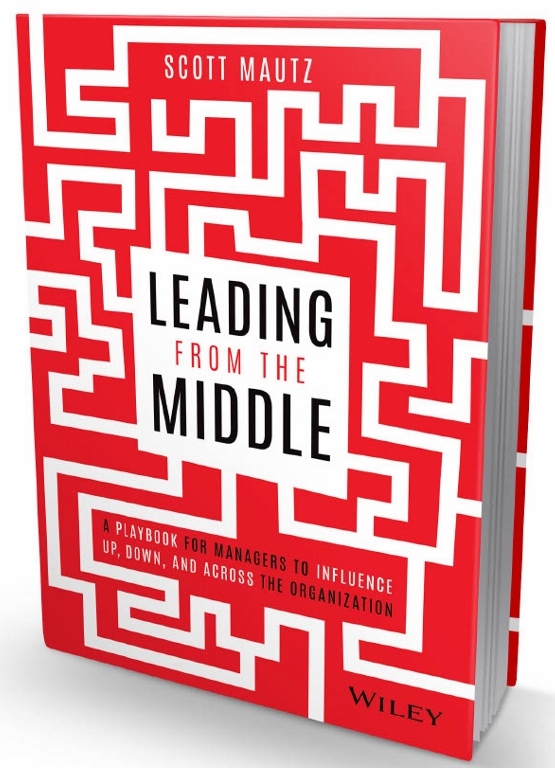
A team working with a strong sense of purpose is a force to be reckoned with. So how do you create it? With a tool called “The Purpose Pyramid,” one that I share in my (#1 bestselling!) new book, Leading from the Middle. Imagine the visual of a pyramid with 5 layers to it. The label of each layer starts with the following letters (a handy acronym) – DRIVE – as in, here’s how to create a purpose for your team and drive it down throughout the team so that it sticks, and has an everyday impact. Here’s what the acronym stands for and how it leads to creating a powerful team purpose.
Discover. The first step is to discover your team’s purpose, not invent it, because chances are it already exists. Ask the why, who, and what questions. Talk to your longest standing team members or customers of that team and ask them why the team was formed to do what they do. For what higher order reason? How can you find common ground on higher ground? Ask who does your team ultimately serve, in what way? Ask what can your team be the absolute best at? Enroll your entire team in these questions so they’re a part of creating the purpose, not just recipients of it. As a bonus question, you can also ask what your team’s most closely held values are. A team living their values with great intention every day is a great starting point, or even a proxy, for a purpose. With all of this as fodder, you’ll identify threads of what your team’s purpose might be. Pick a thread that feels most pertinent and powerful and then boil it down to a simple sentence. A few example purpose statements: “This team exists to set the standard for collaboration in the company” or “We’re here to be the most indispensable supplier our customer has.” You get the idea. As you develop your own team’s purpose statement, how do you know if it’s a good one? One simple filter. Ask this question about your draft purpose statement: Is it definitive about the difference you’re thrilled to make? If it is, magic.
Role model. Having discovered your team’s purpose, now it’s time to role model it. Sure, roll the purpose into your team’s behaviors and vernacular—that’s the obvious part. But I’m talking here about leveraging the purpose statement to actually help you make decisions. Use it to keep reminding yourself of what you’re fighting for. That’s another filter, by the way. If the purpose statement inspires the thought of what you’re fighting for and reenergizes you to keep fighting for it, it’s a good one. Keep the purpose statement in front of your team, even if you have to print it, frame it, and bring it into team meetings with you. Again, the purpose statement multiplies in power when you actually use it to help guide your team’s decision making.
Internalize. Employees have to internalize how the purpose comes to life in their jobs. If they don’t make the connection, it’s just a meaningless sentence painted on the team meeting room wall or in the main lobby of HQ. Nothing will be done with it nor will it inspire any behavior change. Challenge team members to articulate how the purpose specifically comes to life in their jobs. For example, a grocery chain I keynoted for held essay contests, offering a $500 prize to employees who wrote the best articulations of how their job supported the company purpose. If needed, sit down with each team member and help them draw the connection between their work and the team’s purpose.
Value. With everyone fully enrolled now, it’s time to walk the talk even more so by visibly demonstrating that you value adherence to the purpose. This is where you reward behaviors consistent with upholding the purpose. Create a fund for the leadership team members (for the head of sales, product development, marketing, etc.) to use at their discretion to recognize and reward team members when they’re seen acting in accordance with the team’s purpose.
Evangelize. Finally, enroll passionate change agents, team members especially excited about the purpose and eager to help others embrace it. Give all team members, especially those on the front line, tools to help encourage the evangelizing of the purpose. For example, provide a budget for everyone (not just the leadership team) that they can pull from to reward each other with tokens of appreciation on the spot for behavior they see that exemplifies the purpose.
Having your team working with a deep sense of purpose makes a massive difference. It just takes a pyramid populated with the DRIVE acronym, and some drive to follow through on each step.
Get my new book, an Amazon #1 BEST-SELLER in multiple categories! Leading from the Middle: A Playbook for Managers to Influence Up, Down, and Across the Organization can be ordered here https://amzn.to/3as5tK8 OR… Get a massive BONUS BUNDLE by ordering copies for your team (5 or more) here: http://lftm.bulkbooks.com/ Check out a detailed book description here: https://bit.ly/2MLe5Do





Leave a Reply